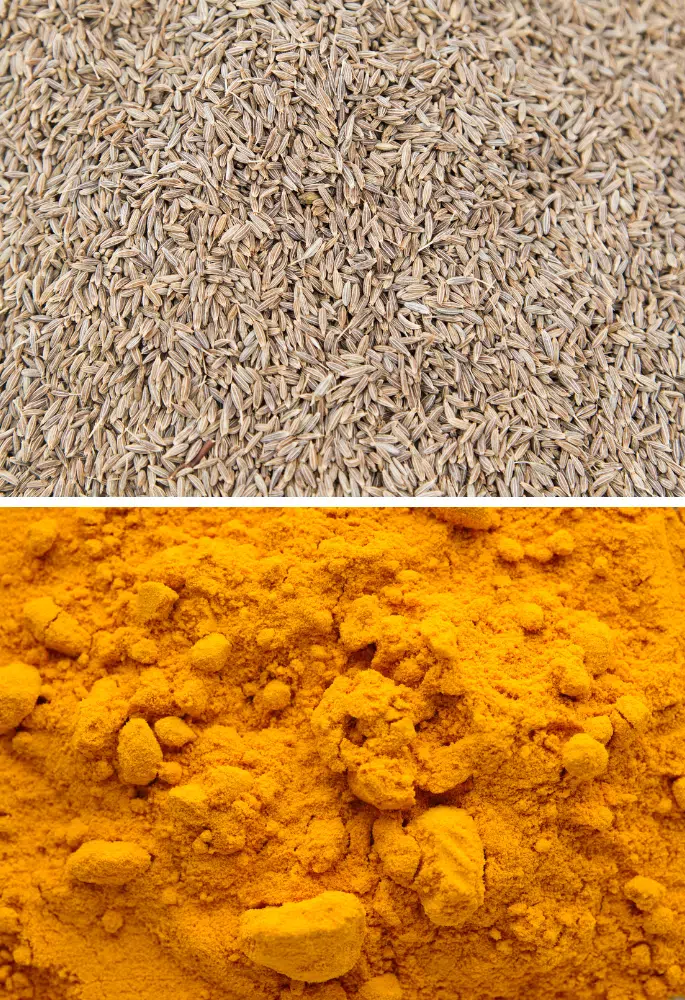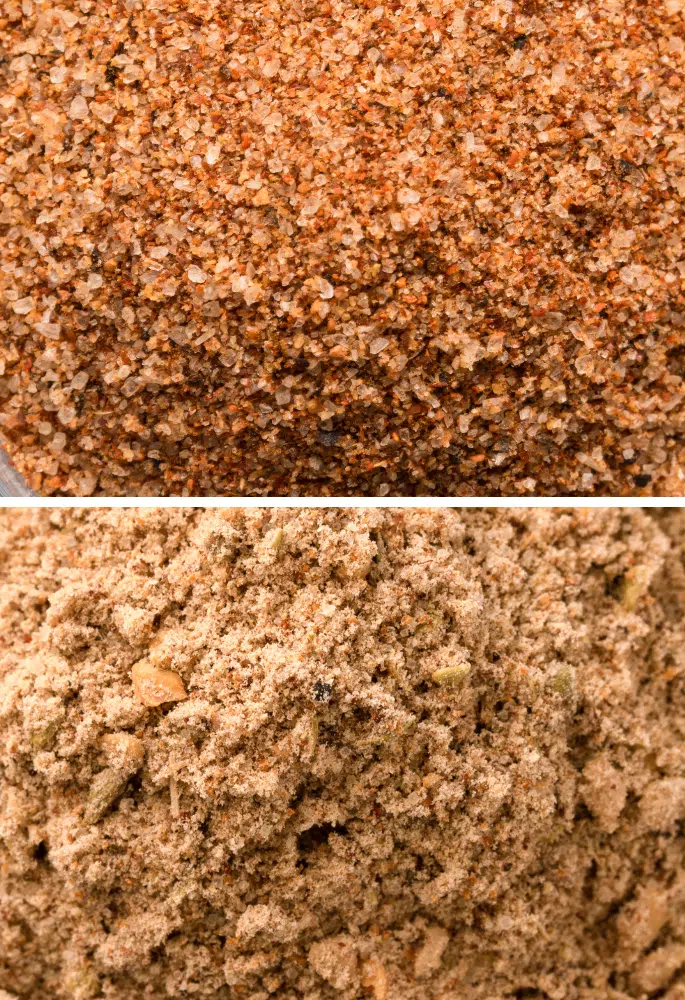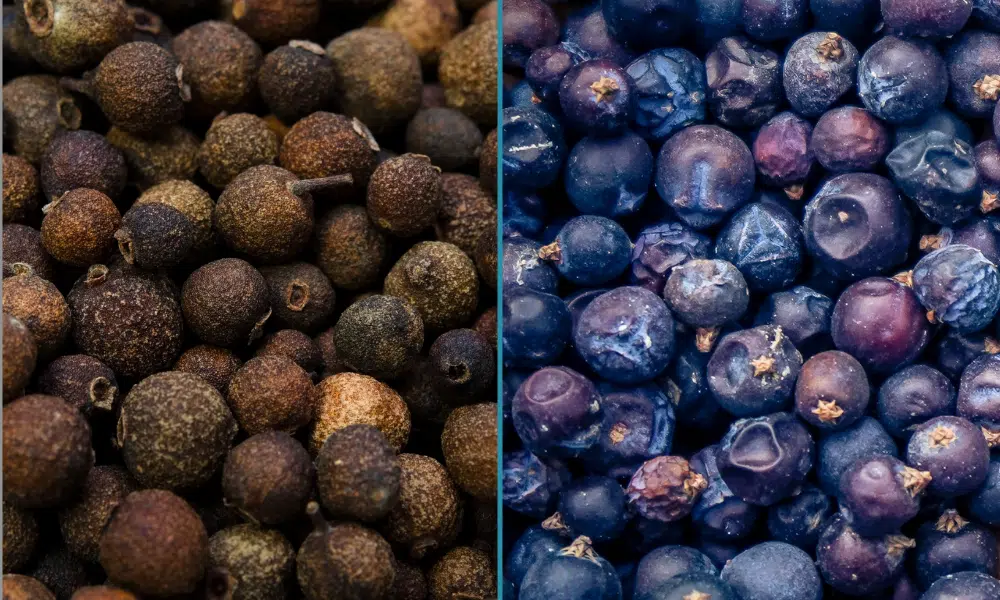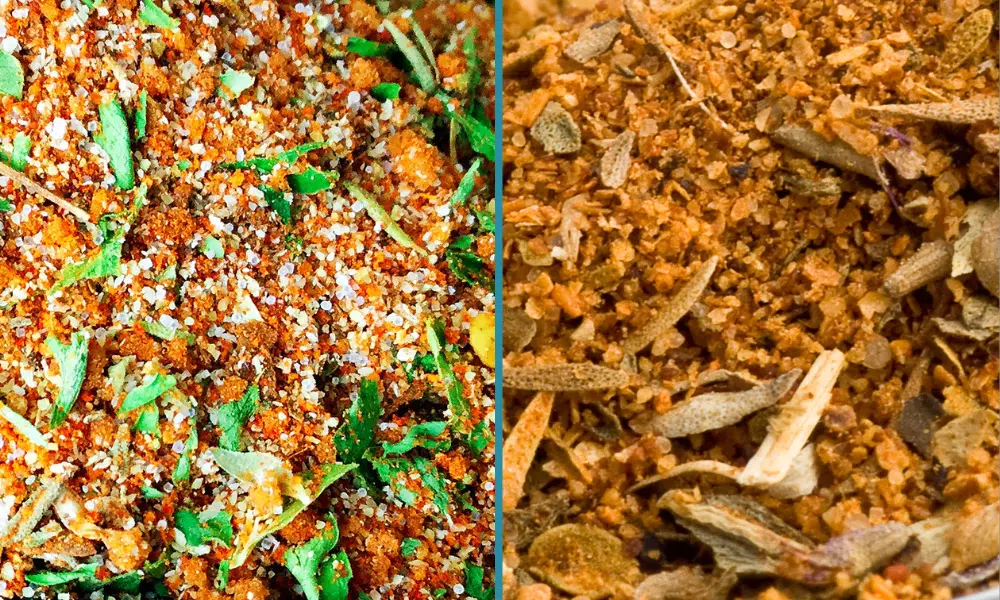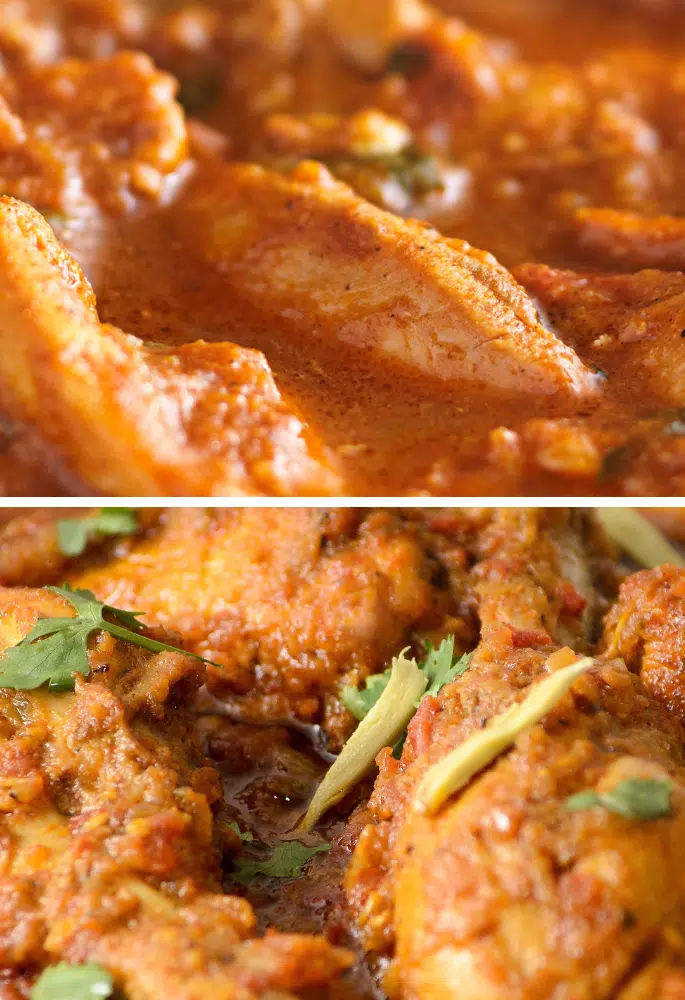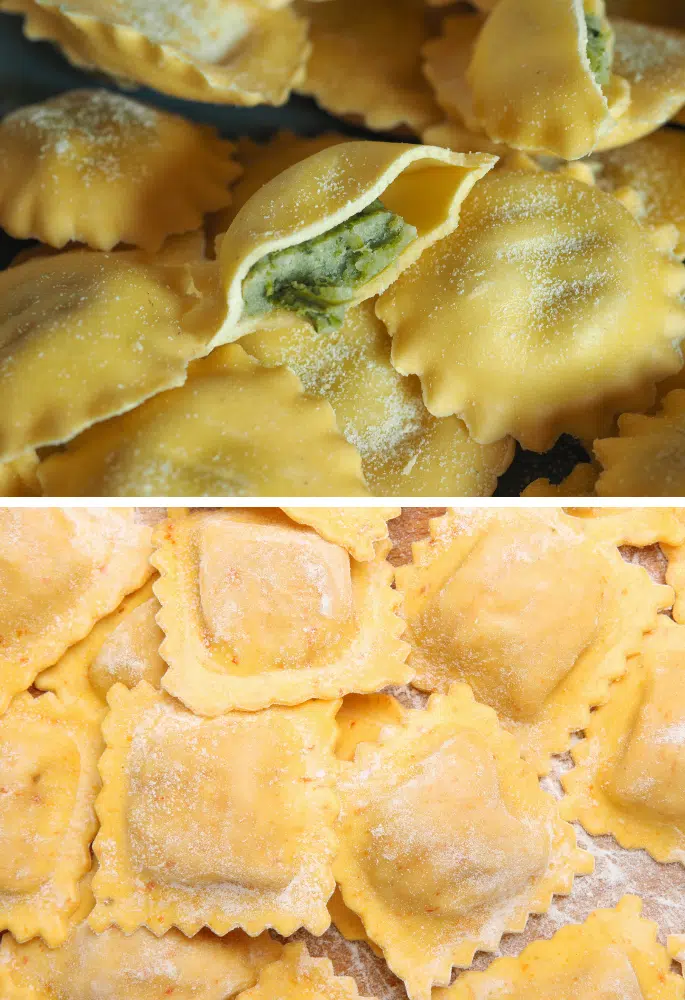Japanese cuisine is loaded with delicious condiments, two of which are Togarashi and Furikake. While similar in their use of various ingredients to enhance dishes, these seasoning blends have distinct differences. So, how do they compare?

Togarashi, known for its heat, is a spicy seasoning blend, whereas Furikake is more varied in flavour, often umami-rich, and used as a versatile topping. Their primary difference lies in their ingredients.
What is Togarashi?
Togarashi, also known as Shichimi Togarashi, is a Japanese spice blend that dates back to the 17th century.
It traditionally comprises seven ingredients: red chilli pepper, sansho pepper (a type of Japanese pepper), roasted orange peel, black and white sesame seeds, hemp seed, ground ginger, and nori or aonori (seaweed).
The blend is known for its heat, provided primarily by the chillies, and is used to add a spicy kick to dishes. It’s commonly sprinkled on soups, noodles, and grilled meats.
To make Togarashi, mix equal parts of ground red chilli pepper, orange peel, seaweed, sesame seeds, poppy seeds, ginger, and Sichuan or Sansho pepper. This Japanese spice blend offers a complex flavour profile, balancing heat, citrus, and umami. Adjust proportions to taste or add additional ingredients like garlic for a unique twist.
What is Furikake?
Furikake, in contrast, is a dry Japanese seasoning meant to be sprinkled on top of rice. It typically includes a mix of dried fish, sesame seeds, chopped seaweed, sugar, salt, and MSG.
However, there are numerous variations, some incorporating dried egg, shiso, bonito flakes, or wasabi.
Furikake adds a savoury, slightly sweet, and umami flavour to dishes. It’s not only limited to rice but also used on vegetables, fish, and even snacks like popcorn.
To make Furikake, mix toasted sesame seeds, chopped seaweed (like nori), salt, sugar, and optionally, dried fish flakes or bonito. Ingredients like dried shiso leaves, wasabi powder, or dried egg can be added for different variations. It’s commonly sprinkled on rice, adding flavour and texture.
Similarities Between Togarashi and Furikake
Although they have completely different flavours, both Tograrashi and Furikake do share some similarities to one another:
- Versatility: Both Togarashi and Furikake are versatile and used in a variety of dishes, from soups to snacks.
- Origin: Each is a traditional Japanese seasoning with a long history in Japanese cuisine.
- Presence of Seaweed: Both often include seaweed, contributing to their distinct flavours.
- Usage as Toppings: They are commonly used as toppings to add a burst of flavour to relatively plain dishes, like rice or noodles.
Differences Between Togarashi and Furikake
There’s no denying that these are completely different spice mixes. You can tell just by looking at them! But, what else sets them apart?
- Primary Flavour: Togarashi is primarily spicy and pungent, whereas Furikake is more umami and savoury with a subtle sweetness.
- Ingredient Composition: Togarashi includes chillies and sansho pepper for heat, while Furikake often contains dried fish or seaweed for umami.
- Usage: Togarashi is typically used as a finishing spice to add heat, whereas Furikake is used more as a seasoning for rice and other dishes to enhance overall flavour.
- Texture: Togarashi is a coarser blend, with more noticeable chilli flakes and sesame seeds, while Furikake is finer and more consistent in texture.
- Variations: While both have variations, Furikake tends to have a wider range, including flavours like salmon, egg, and wasabi.
Yes, you can substitute Togarashi for Furikake, but expect a spicier flavor. Togarashi, a Japanese chilli pepper blend, is hotter than Furikake, which is a milder seasoning mix with seaweed, sesame seeds, and often fish flakes. The substitution will change the dish’s taste profile.
Togarashi vs Furikake: Which Wins?
If you could have only one of these Japanese seasonings in your kitchen, which would get your vote? Do you prefer the salty umami flavour you get from Furikake, or do you want the intense heat of Togarashi?
Do You Prefer Togarashi or Furikake?
Hailing from Liverpool, Oliver is an adventurous chef with a penchant for exploring diverse cuisines and novel ingredients. Ollie, combining his love for local British flavours with global influences, brings innovation and charm to home cooking.


